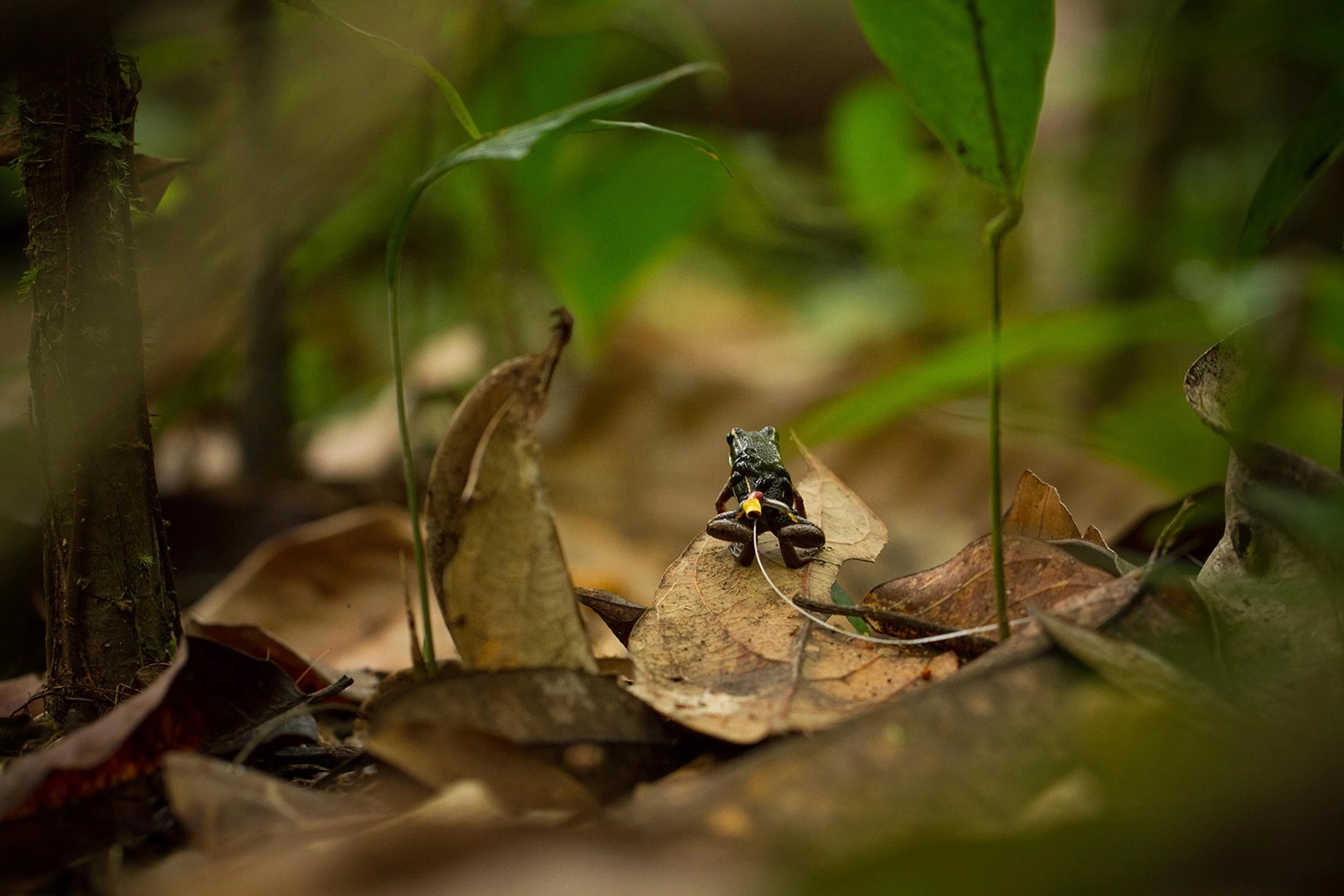Poison frogs are famous for a lot of things: intense bright colors, tadpole cannibalism, and of course the toxins they secrete through their skin. Wearing teeny tiny trackable frog pants, however, hasn’t been one of them – until now.
To explore how males and females of three different species of poison frog are using their spatial skills, researchers from Stanford University came up with an unusual method of tracking the brightly colored amphibians across the rainforest floor. In French Guiana and Ecuador, male and female poison frogs were fitted with “frog pants”, each connected to a radio tracker, to allow the team to monitor the frogs’ navigation.
“In many mammals, males move more and have better-developed spatial skills,” explained Lauren O’Connell, study co-lead and assistant professor of biology in the School of Humanities and Sciences, in a statement.
There are two competing theories about why males might have better spatial skills. The first is that it is an adaptive trait related to the fact that males have different mating strategies than females. The second idea is called the androgen spillover hypothesis, and suggests that males having better spatial skills is a side-effect of having higher levels of androgens, which are the sex hormones that include testosterone. Until now, these two ideas had not been tested in non-mammals in the wild.
The three species that were chosen, the brilliant-thighed poison frog, the dyeing poison frog and the diablito poison frog, were selected because they all have different methods of parental care. But tracking a tiny frog through the rainforest isn’t easy, which is where frog pants come in.
“Miniature tracking tags have been used on amphibians and other animals before but tracking tiny mobile frogs in the rainforest required reimagining the tag design and the tracking methods,” said Andrius Pašukonis, postdoctoral scholar in O’Connell’s lab and inventor of the frog pants. “One of the biggest challenges has been designing and perfecting a frog harness that can fit a frog as small as two centimeters (less than an inch)!”
Not just stylish, this tracker helps the team monitor the frog’s navigation.
Image courtesy of Andrius Pašukonis
The frogs were moved to test their spatial skills and allow the team to track them on their return journey home. Before and after the move, the frogs had a little trip to the spa, where a tiny bath allowed the researchers to collect hormones from the bath water. More than 200 frogs were captured and relocated either 50 or 200 meters (164 or 656 feet) from their known home territory. Frogs that made 70 percent of the journey within a set timeframe were judged to have returned home.
The results of the study suggest that the androgen-spillover hypothesis is most likely, as the team found that females of the dyeing poison frog navigated better than their male counterparts. In the diablito frogs that have predominantly female parental care and larger home ranges, the females did not navigate better than the males. Females were also slightly more accurate with their routes home than males across the longer distances.
The study is published in eLife.
Source Link: Tiny Frogs In G-Strings Reveal Insights Into Amphibian Rainforest Navigation
